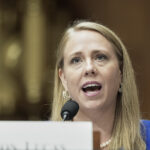Thanks in part to higher surplus levels and favorable risk-adjusted capitalization at the start of 2021, the U.S. personal lines insurance segment has managed to navigate the challenges of this year including above-average catastrophe activity, a return to pre-pandemic frequency trends, and increased loss cost severity.
Looking ahead to 2022, ratings agency AM Best is maintaining a stable market segment outlook on the U.S. personal lines insurance industry. AM Best analysts point to the segment’s strong risk-adjusted capitalization, underwriting actions limiting volatility in the homeowners line and the acceleration of the use of technology in the pandemic environment as reasons for the outlook.
Best’s Market Segment Report, “Market Segment Outlook: U.S. Personal Lines,” finds that the segment’s risk-adjusted capitalization levels remain robust, with positive cash flows and favorable liquidity further supporting the position.
Although many companies held off on pricing increases early in the pandemic, they resumed rate actions in late 2020 and continued throughout 2021. Higher pricing was needed, as catastrophe activity spiked in 2020 and remained above average in 2021. Along with other various underwriting actions such as exposure management and enhanced reinsurance, carriers were able to limit the impact of catastrophe losses in 2021.
Technology initiatives to improve personal lines insurers’ underwriting and pricing tools picked up significantly during the pandemic, according to the report. Insurers are seeing auto claims frequency rebound alongside adverse severity trends at the same time that the industry is facing major supply chain disruptions and higher inflation, which are resulting in higher costs for materials and parts.
“In recent years, the best-performing auto and homeowners’ insurers have invested significant amounts of resources into technology to improve their underwriting and pricing tools. Advances in predictive modeling and pricing analytics, as well as the use of third-party data, have provided carriers greater opportunities to pursue profitable growth,” the report says.
AM Best advises that innovative use of technology and data analytics to strengthen underwriting, claims handling and ratemaking remain key to reaching profitability targets. The analysts predict that insurtech in both the auto and homeowners markets will continue to grow.
While a number of factors favor the segment, personal lines writers also face challenges heading into 2022. These include auto loss frequency returning to pre-COVID levels and severity increasing while having premium trends keep pace. Insurers also face the likelihood of a greater number of potentially worse catastrophe events and increasingly problematic claims from secondary perils.
Another challenge is rising reinsurance costs, which the report warns can pressure operating performance as well as balance sheet strength. “Primary carriers may struggle to pass these higher costs through to their customers for fear of losing market share and due to hurdles from regulatory restrictions in certain states,” AM Best concludes.
Topics Trends
Was this article valuable?
Here are more articles you may enjoy.



 Head of EEOC Urges White Men to Report Discrimination
Head of EEOC Urges White Men to Report Discrimination  Board Calls for US Steel to Address Safety Issues as It Rebuilds Site of Fatal Explosion
Board Calls for US Steel to Address Safety Issues as It Rebuilds Site of Fatal Explosion  Former CEO of Nonprofit P/C Statistical Agent Sentenced for Stealing Millions
Former CEO of Nonprofit P/C Statistical Agent Sentenced for Stealing Millions  Three Top P/C Insurers Account for Most of Insurance AI Patents
Three Top P/C Insurers Account for Most of Insurance AI Patents 

